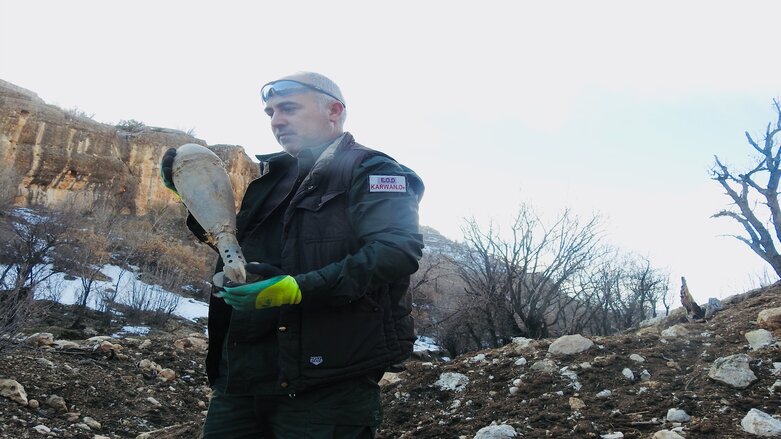39 percent of minefields in Duhok have been cleared

DUHOK (Kurdistan 24) – The Kurdistan Region’s Duhok province has long suffered due to landmines and other explosive hazards, most of which were planted by the Iraqi Army under the regime of Saddam Hussein.
Out of 775 minefields in Duhok, 52 percent are located in the Amedi district, the director-general of the Directorate for Mines and Explosives in Duhok, Sheelan Thamer, told Kurdistan 24. At least 370 of these minefields have been cleared, 39 percent of all such fields in the province, while 405 still need clearing.
Thamer praised MAG NGO for its crucial work removing mines in Duhok.

MAG started its demining operations in the Kurdistan Region province in 1998. Before that, it was active in awareness campaigns.
The NGO’s focus shifted to areas liberated from ISIS after the recent war in Iraq. In 2021, MAG stopped its work in Duhok. However, Sheelan told Kurdistan 24 that it is set to start work again in the province this April.
Duhok still has border areas that have not been surveyed for mines, primarily Nerwa and Rekan, as well as some sites in the Berwari Bala region.
According to data from Thamer’s directorate, 111 people have fallen victim to 68 mine explosions in Duhok between 2008 and 2022.
Four employees of the directorate working in the minefields have lost their lives, as have four NGO employees.
PKK presence undermines demining efforts in Duhok
“PKK militants in some areas are the biggest obstacle in the way of our work, some populated villages like Siyar and Spindar have pastures that need to be demined, but the PKK presence and movement around those areas hinder our efforts,” said Thamer.
“At the same time, even if such places are cleared, there’s no guarantee that there won’t be mines planted there again,” she added. “Because of this, many people can’t go back to their villages or their orchards.”
There are also minefields near the Serzeri area that has a border crossing with Turkey. However, because of the PKK presence in the area’s vicinity, it has not yet been possible to work on clearing that area of mines. Nevertheless, there are plans in place to start work on the area despite that group’s presence.
In May, five teams will begin work on clearing some areas of Gara Mountain, paving the way for the construction of a cable car there in the future.
Two teams are at work in Galaka village in the Amedi district and in minefields in the Mangesh sub-district, even though the COVID-19 pandemic and financial limitations have slowed progress.
The mines and explosives directorate has a hotline, 182, and urges citizens and visitors to call it about anything related to the mines and explosives in the province.

Demining brings life back to land
Life has returned to areas that have been cleared of mines since the previous dangers and hazards to citizens entering them has been eliminated.
Clearing areas of mines also have economic benefits for Duhok. For example, the Zakho tunnel was built in one area cleared from mines and a hydropower dam was recently constructed in Rashava valley that can produce 39 megawatts of electricity.
